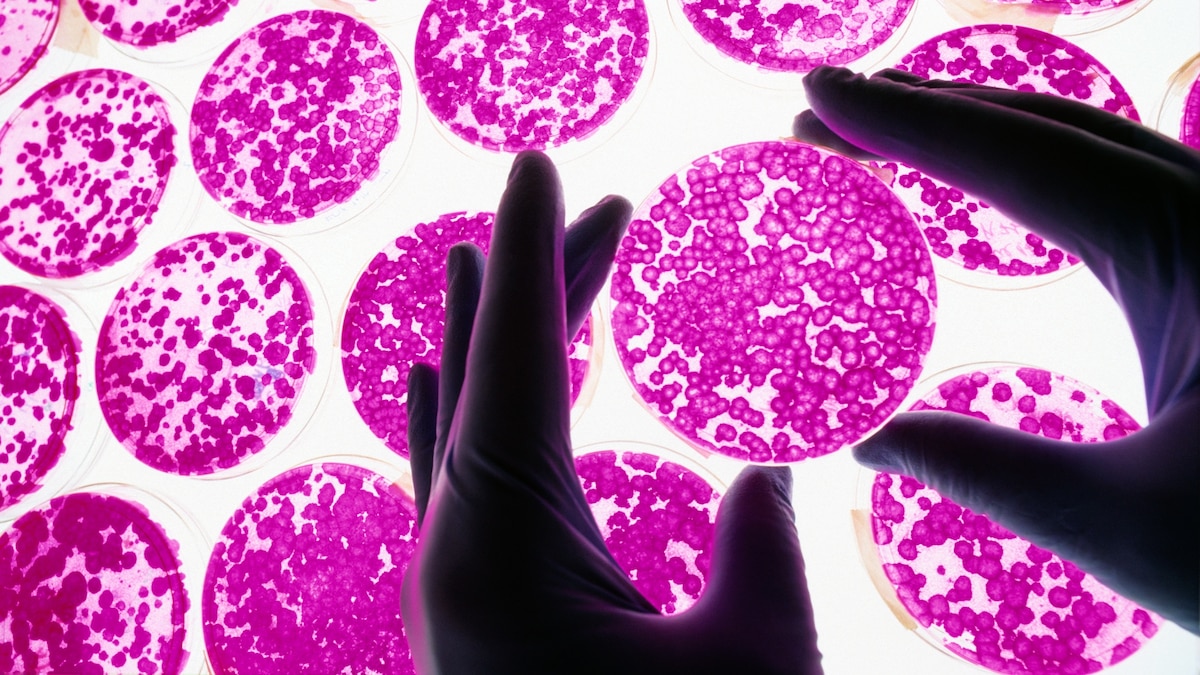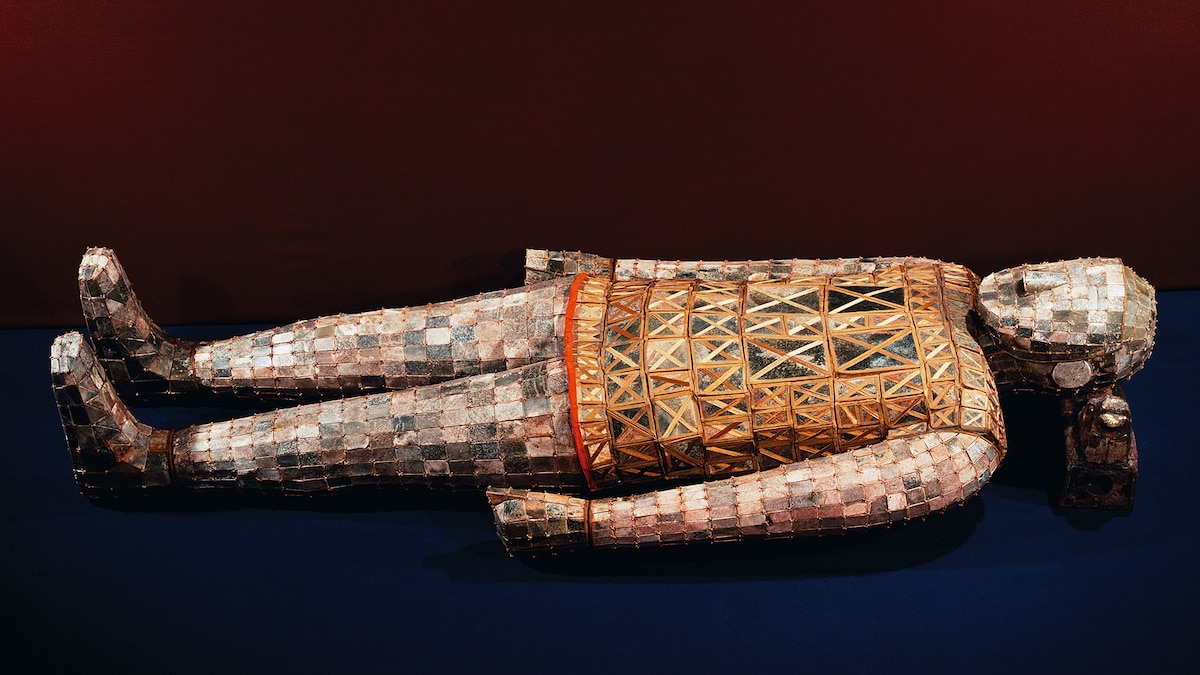Now Reading: The ability to reverse damage to your lungs and heart is tantalizingly close
-
01
The ability to reverse damage to your lungs and heart is tantalizingly close
The ability to reverse damage to your lungs and heart is tantalizingly close

In the 1986 movie Star Trek IV: The Voyage Home, Dr. McCoy hands a dialysis patient a single pill and she immediately grows a new kidney. That’s the holy grail of regenerative medicine, and it has proven frustratingly elusive.
When disease damages crucial organs like the heart or lungs, the best doctors can generally do is stop the harm from worsening. Now, after three decades of trial and error, the prospect of revving up the body’s own stem cells to become advanced organ repair shops is tantalizingly close.
Stem cells are crucial biological factories that manufacture the cells responsible for tissue growth and repair. A novel approach by Scripps Research, a nonprofit research institute in La Jolla, California, uses medicines to multiply these cells. The technique has brought dead tissue back to life in lab cells, mice, pigs, and a small number of people. Meanwhile, other scientists are finally finding some success with older techniques reprograming stem cells in the lab before implanting them to grow new tissue.
If progress continues as expected, these methods could one day dramatically improve survival and quality of life for people with serious diseases, many of which, like osteoarthritis, are linked to aging.
(Axolotls stop aging after four years—could studying them help humans live longer?)
Most medicines work by slowing down disease progression, but these new drug candidates aim to repair damage. “We have the potential in the next two to three years to show we can reverse lung damage and heart damage,” says Pete Schultz, CEO and President of Scripps Research, “and if we do it will fundamentally change the way people think about reversing disease.”
All the scientists involved emphasize that testing in people is still needed to confirm that the treatments are safe and effective, and it will likely be a decade before any might be approved for medical care. But after regenerative medicine’s many false starts, they are optimistic they’ve finally turned the corner.

Platelet-rich plasma injections are one of the current treatment options for osteoarthritis. While these injections can stimulate healing, the results have been mixed.
Photograph by Henadzi Pechan, Getty Images

Regenerative medicine has largely focused on extracting stem cells (like this one) from patients, altering them and re-implanting them in patients.
Micrograph by Steve Gschmeissner, Science Photo Library
Prodding natural stem cells into action
At Scripps, the process began by screening millions of potential drug molecules to identify ones that stimulate an organ’s naturally occurring, or endogenous, stem cells. Researchers identified compounds that expand the number of the healthy stem cells in the lungs, heart, joints, and eyes. (The concept of using small molecules this way is based on an earlier collaboration between Scripps and the nonprofit Genomics Institute of the Novartis Research Foundation, later integrated into the drug company Novartis.)
Such an approach “is interesting and powerful,” says Chuck Murry, director of the Eli and Edythe Broad Center of Regenerative Medicine and Stem Cell Research at the University of California’s Keck School of Medicine, who is not involved with Scripps’ program. Scripps’ technique takes a giant step towards the famous scene from Star Trek, Murry says.
Scripps’ lung medicine activates stem cells in the lower airways, known as type 2 alveolar epithelial (AEC2) cells, responsible for manufacturing crucial cells for exchanging stale oxygen for fresh. In healthy people, new gas-exchange cells continually replace damaged ones, but the process is blunted in medical conditions such as chronic obstructive pulmonary disease, idiopathic pulmonary fibrosis, or when lungs are damaged by wildfire smoke or viral infections like COVID-19.
Studies in mice show the once-weekly inhaled drug stimulates enough AEC2 stem cells to repair lungs damaged by fibrosis, a severe and often fatal disease where scar tissue makes it hard to breathe. Safety tests in some 70 healthy people are now underway, with plans later add some with fibrosis.
Using medicine to stimulate the stem cells in the lungs could be a game changer because it could be widely deployed, says Maurizio Chioccioli, assistant professor of comparative medicine and genetics at the Yale School of Medicine, who is not involved with Scripps. “You can imagine it easily being used, because someone can inhale the drug that directly targets the cells,” Chioccioli says. His own research using real-time imaging of lung stem cells found they surprisingly move and change shape during repair, processes that must be accounted for when designing treatments.

This lab-grown heart was made from pluripotent stem cells. Researchers hope to use drugs to induce heart tissue to regrow in the body rather than in a lab.
Photograph by Philip Fong, AFP/Getty Images
Restoring a pig heart after a heart attack
Slightly behind in the pipeline is another Scripps drug to rebuild cardiac tissue following a heart attack. Today, stents and medicine reopen blood vessels and return flow, a technique that has more than halved heart-attack mortality in recent decades. “We’ve dramatically improved survival, but there’s still a lot of dead muscle there,” says Richard Stack, a cardiologist at Duke University. “If we can make that region that was not functioning start beating again, now we’ve really accomplished something.” Stack is managing partner of the Cardiovascular Masters Consortium, a consulting firm of top-level physicians working with Scripps on the medicine.
You May Also Like
The drug is a hydrogen gel that is injected into the sac surround the heart muscle days after a heart attack, which activates a protein pathway that otherwise lies dormant once the heart reaches adult size. The newly reactivated stem cells generate healthy cells that fill areas of the heart sustaining damage.
The drug works in laboratory mice and a small number of pigs, Scripps says, although results are unpublished and not yet peer-reviewed.
Imaging from one pig revealed that its ejection fraction—a crucial gauge of the heart’s ability to pump oxygen-rich blood to the body—plunged following the heart attack but returned to normal a month after treatment. Testing in additional pigs is underway, with human trials expected to start in 2027.
Stack was “blown away” by the early animal results. “I’ve not seen anything so dramatic in 44 years of practice,” he says.
Gaining success with older techniques
Meanwhile, Murry and his colleagues at the University of Southern California are reprogramming adult blood stem cells to become heart muscle cells that are then transplanted. After decades of stop-and-go progress, the method finally works. “We are making new muscles in the heart that is improving heart function; the science is there,” Murry says.
The technique has been tested in mice, rats, guinea pigs, nonhuman primates, and pigs, with human trials expected to start in 2027. “I have a rational basis to say we’ve hit all the major roadblocks we’re going to,” Murry says.
The final obstacle was that, in rhesus macaque monkeys, the new cells beat too fast the first few months after transplantation, triggering palpitations. Giving the animals drugs that modulate their heart rhythm or, alternatively, employing gene editing in the cells before implanting solved the problem.
In a study published July 2024, two monkeys embraced the new cells without incident when treated after a heart attack, their hearts beating as if they never sustained injury.
Past and future speed bumps in regenerative medicine
As with older techniques, the approach of using drugs to stimulate the body’s natural stem cells isn’t without setbacks. Scripps has also been trying to target stem cells to generate new joint cartilage for osteoarthritis, but the drug hit hurdles before its final lap.
The medicine proved effective in animal models by inducing stem cells to make new joint tissue. But injecting the drug into the knees of 60 people in an early-stage clinical trial didn’t produce sufficient quantities of cartilage to make a meaningful difference, according to unpublished research. Scripps has pulled back further studies until it develops a longer-lasting formulation.
Novartis is also testing a drug to stimulate cartilage regrowth, successfully completing a small safety study in some two dozen patients. The company is in the process of testing a larger number of people for safety and effectiveness; company officials are not yet commenting on its progress.
While the finish line for regenerative medicine is closer than ever, new challenges may yet emerge. One is ensuring the sweet spot between growing wanted tissue and overstimulating cells, which could lead to cancer. “The real challenge moving forward is to try to figure out where, when and how much to activate these pathways, to enhance the repair without triggering unintended consequences,” Yale’s Chioccioli says. Scientists are so far heartened by the lack of this issue in their smaller safety studies and in Murry’s pig research, which found no abnormal cells in the heart or other organs.
After decades of experimentation, it may finally soon be possible to repair damaged organs in a way that gives sick people a new shot at a quality life, says Mike Bollong, associate professor of chemistry at Scripps Research. “That’s really what regenerative medicine is about.”























